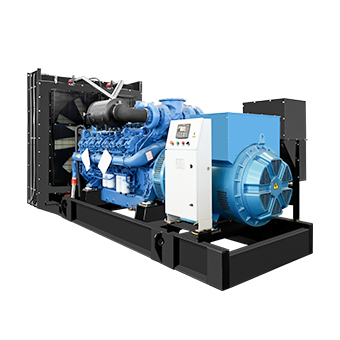
In today's digital age, data centers, as critical facilities for information storage and processing, are of undeniable importance. With the rapid development of technologies such as cloud computing, big data, and the Internet of Things, data center construction and management are facing unprecedented challenges. Power supply security, in particular, not only impacts the operational efficiency of the data center itself but also directly impacts the business operations and information security of the enterprise. Therefore, the function of
data center generators is crucial. This article will comprehensively analyze the working mechanisms, types, selection criteria, and maintenance and management of data center generators, aiming to provide a useful reference for relevant practitioners and managers.
1. How Data Center Generators Work
In simple terms, a data center generator is a device used to provide backup power. In the event of a power outage, it quickly activates and provides power to the data center, ensuring normal operation. Most data centers are equipped with both an uninterruptible power supply (UPS) and a generator. The UPS provides short-term power support during a power outage, while the generator ensures continuous power supply during prolonged outages.
Generators typically operate on internal fuels such as diesel and natural gas. Upon receiving a fault signal from the power system, the generator's automatic control system immediately activates. After a few seconds of warm-up, it begins generating power normally, supplying servers, network equipment, and other critical equipment in the data center. The key to this system is system reliability and rapid startup, which are directly related to the data center's business continuity.
II. Types of Generators
There are two main types of generators commonly used in data centers: diesel generators and natural gas generators.
1. Diesel generators are the most commonly used power generation equipment in data centers. Their main advantages are rapid startup, high power, and stable operation. Diesel fuel is relatively low-cost, making it suitable for large-scale use. However, diesel generators have the disadvantages of high emissions and noise, requiring careful consideration in site selection and maintenance.
2. Natural Gas Generators: Natural gas generators offer advantages such as low environmental pollution and low maintenance requirements. Natural gas has high combustion efficiency, effectively reducing operating costs. They are commonly used in large data centers and businesses seeking to reduce carbon emissions. However, their disadvantage is that the stability of the natural gas supply directly affects power generation reliability.
3. Hybrid Generators: In recent years, some data center generators have begun adopting hybrid power, some combining it with renewable energy sources, such as diesel or natural gas, or solar or wind power. This allows for a more diverse power source, enhancing power supply flexibility and environmental friendliness.
III. Criteria for Selecting a Data Center Generator
Selecting the right data center generator involves multiple factors, and companies should consider them comprehensively based on their actual needs and conditions.
1. Power and Load Calculation: When selecting a generator, first evaluate the power requirements based on the data center's actual load requirements. This typically involves considering the total power output of the equipment, while leaving some margin for future expansion.
2. Fuel Type: Depending on the location and fuel availability, choose a diesel or natural gas generator. To balance environmental protection and cost, some companies may prefer cleaner energy sources.
3. Startup Method and Operating Mode: Data centers require a generator with fast response times. When selecting a generator, consider its automatic start capability and operating mode (on-grid or off-grid).
4. Maintenance and Support: The lifespan of a generator is closely related to routine maintenance. Therefore, consider the manufacturer's service quality and after-sales support when purchasing. This is also reflected in brand selection. Well-known brands generally offer advantages in design, quality, and technical service.
5. Environmental Standards: With the global emphasis on environmental protection, many regions have strict emission requirements for generators. Choosing equipment that meets environmental standards not only complies with regulatory requirements but also helps companies enhance their social responsibility image.
IV. Generator Maintenance and Management
Regular maintenance and care are crucial during the life of the generator. Companies should develop a comprehensive maintenance and management plan to ensure that the generator is always in optimal working condition.
1. Regular Inspections: Regularly inspect key components such as the fuel, oil, battery, and cooling system to ensure proper operation. The frequency of inspections can be determined based on the generator's usage and environmental conditions.
2. Cleaning and Maintenance: Keeping the generator clean is crucial to prevent dust and dirt from affecting its performance. Also, clean the fuel filter regularly to ensure the purity of the fuel.
3. Lubrication and Replacement: Regularly replace the engine oil and oil filter based on the frequency of use of the generator, establishing an appropriate replacement schedule. Additionally, inspect and replace other related fluids, such as coolant and fuel.
4. Load Testing: Regularly load test the generator to ensure it can achieve the expected power output in actual use.
5. Emergency Drills: Conduct regular emergency drills to verify the generator's reliability during power outages, ensuring rapid commissioning at critical moments.
V. Summary
With the increasing popularity of data centers across various industries, the importance of generators as a key component has become increasingly prominent. Selecting the right generator and implementing effective maintenance and management not only ensures stable data center operations but also effectively reduces operating costs and improves resource efficiency. In the face of rapid technological advancements in the future, data center generators will gradually move towards intelligent and environmentally friendly designs, safeguarding the sustainable development of the digital economy.
